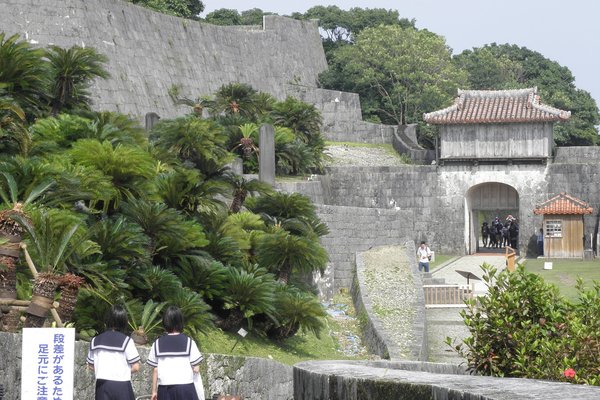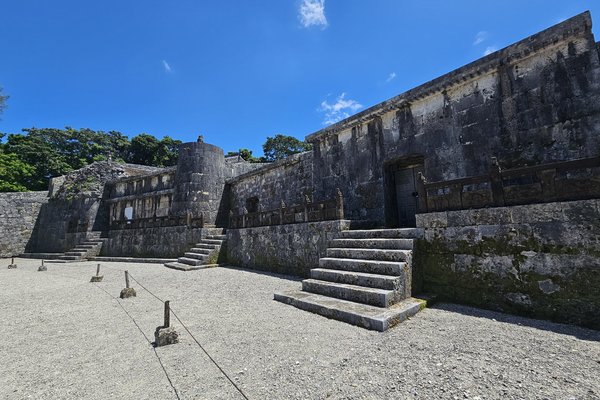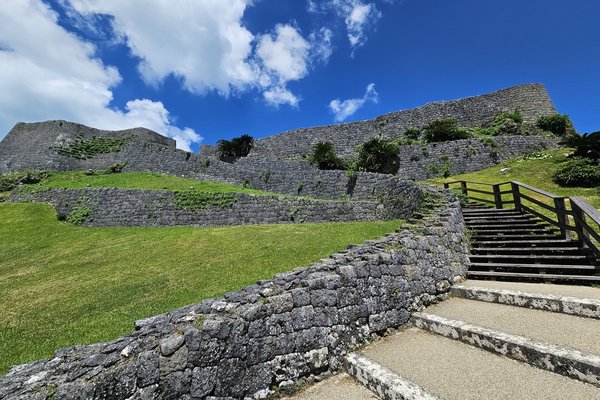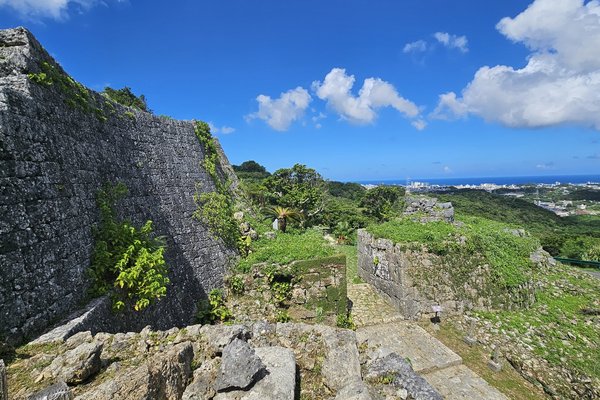Japan
Gusuku of Ryukyu
The Gusuku Sites and Related Properties of the Kingdom of Ryukyu are a group of nine stone monuments and archeological sites on the island of Okinawa.
They are the remains of the ancient Ryukyu kingdom, which flourished between 1429 and 1609. The “Gusuku” were walled compounds, which evolved into forts and castles of local chieftains. They were both political and religious centres. Some are still used for traditional religious rituals such as nature worship. The unique Ryukyu culture was heavily influenced by the economic and cultural interchange with Japan, China, Korea and Southeast Asia.
Community Perspective: A good excuse to come to Okinawa, you’ll find a different version of Japan. It is also a must for anybody interested in visiting castles or even haunted places. Four of the components are located in the capital Nara, so they are easy to access. Randi has described the ones in northern Okinawa.
Site Info
Official Information
- Full Name
- Gusuku Sites and Related Properties of the Kingdom of Ryukyu (ID: 972)
- Country
- Japan
- Status
-
Inscribed 2000
Site history
History of Gusuku of Ryukyu
- 2000: Inscribed
- Inscribed
- Type
- Cultural
- Criteria
- ii
- iii
- vi
Links
- UNESCO
- whc.unesco.org
- Official
-
- seejapan.co.uk — JNTO website
- Related
-
- bootsnall.com — Five UNESCO Castles on One Small Island: Okinawa, Japan (photos by Michael Lynch)
All Links
UNESCO.org
- whc.unesco.org — whc.unesco.org/
Official Website
- seejapan.co.uk — JNTO website
Related Resources
- bootsnall.com — Five UNESCO Castles on One Small Island: Okinawa, Japan (photos by Michael Lynch)
News Article
- Nov. 27, 2024 english.kyodonews.net — Shuri Castle emerges from ashes as reconstruction makes headway
- Nov. 4, 2021 the-japan-news.com — Shuri Castle observation deck opens to view reconstruction 2 years after fire at Okinawa landmark
- Oct. 31, 2019 japantimes.co.jp — Shuri Castle, a symbol of Okinawa, destroyed in fire
- July 5, 2018 www3.nhk.or.jp — Storm damages Nakijin Castle in Okinawa
- Sept. 29, 2016 abc.net.au — Ancient Roman coins unearthed from Japanese Katsuren castle baffle archaeologists
Community Information
- Community Category
- Archaeological site: Far Eastern
Travel Information
One million visitors or more
Recent Connections
-
Perfect Inscriptions
2000 -
Ancestor Worship
"Criterion (vi): The Ryukyu sacred site… -
Located in a TCC Territory
Ryukyu Islands
Connections of Gusuku of Ryukyu
- Geography
-
-
Antipodes points
Shikinaen Site, Naha City N26 12 E127 41 versus Iguazu National Park S25 31 5 W54 7 60 -
East China Sea
Katsuren
-
- Trivia
-
-
Role of Women
Sefa Utaki was run by priestess called Kikoeogimi and her female staffs. -
One million visitors or more
In addition to general visitors, students on field trips and tourists from visiting cruise ships are returning to Shuri Castle Park, with the number rebounding to around 1.44 million in fiscal 2023 / Shuri Castle: 1,875,000 (2015) -
On Banknotes
Shureimon; 2000 Yen; issue July 19,2000 - present -
Minority communities
Ryukyuans
-
- History
-
-
Coronation Locations
Gusuku's Shuri castle courtyard was a coronation place of Ryukyu Kingdom -
Fusion
"cultural interchange between South-East Asia, China, Korea and Japan, and this is vividly demonstrated by the surviving monuments" -
Located in a Former Capital
Shuri, the capital of ancient Ryukyu Kingdom -
Sieges and Battles
Nakijin Castle during the Satsuma invasion -
Famous suicides
Gusuku's Nakijin Castle for the story of local Lord GosamaruSee en.wikipedia.org
-
- Ecology
-
-
Rainforests
The sacred forest of Sefa Utaki, Part of Gusuku Sites is Tropical Rainforest
-
- Architecture
-
-
Chinese Garden
Shikinaen is a mix of Japanese and Chinese garden -
Wooden architecture
Shuri Castle -
Japanese garden
Shikina-en (Naha, Okinawa)
-
- Damaged
-
-
Cultural sites damaged by fire since inscription
Shuri Castle, 31 October 2019 -
Damaged in World War II
Shuri area was totally destroyed in WWII
-
- World Heritage Process
-
-
Perfect Inscriptions
2000
-
- Religion and Belief
-
-
Sacred Forests or Groves
"The Seifa-utaki ... consists of a triangular cavern formed by gigantic rocks, and contains a sacred grove with rare, indigenous trees like the Kubanoki (a kind of palm) and the yabunikkei or Cinnamomum japonicum (a form of wild cinnamon). Direct access to the grove is forbidden." (Wiki) -
Ancestor Worship
"Criterion (vi): The Ryukyu sacred sites constitute an exceptional example of an indigenous form of nature and ancestor worship that has survived intact into the modern age alongside other established world religions." (OUV) -
Holiest place
Seifa-utaki is a Shinto Shrine and the holiest place of Okinawan local religions
-
- Human Activity
-
-
Locations for playing sport
Shikinaen: The garden contained an archery field, as was usually the case with residences for feudal lords of Edo Period Japan (nom file)
-
- Constructions
-
-
Ossuary
Tamaudun, royal tomb, according to Ryukyuan tradition, the royal remains would only be kept in central compartment for a limited time, after which the bones were washed and entombed in the north and south compartments - so technically it is also an ossuary. -
Gates depicting Lions
Gusuku's Many Gates at Shuri castle are decorated by Shisa, the local guardian lion -
Dynastic Burial Places
Tamaudun for the local second Sho Dynasty -
Sundial
At Shuri Castle. The sundial displayed high noon and the hours before and after that. A water clock was used by the Ryuykyans to tell the more precise time. -
Famous Bells
Gusuku's the Bridge of Nations Bell of Shuri Castle -
Stelae
Shuri Castle: On both sides of the stone steps leading to the Zuisemmon seven stelae featuring investiture envoys' handwritings (nom file)
-
- WHS on Other Lists
-
-
Located in a TCC Territory
Ryukyu Islands
-
- Timeline
-
-
Built in the 12th century
Katsuren Castle, built in the 12th-13th centuries, is the earliest among this group of castles.
-
News
- english.kyodonews.net 11/27/2024
- Shuri Castle emerges from ashes as…
- the-japan-news.com 11/04/2021
- Shuri Castle observation deck open…
- japantimes.co.jp 10/31/2019
- Shuri Castle, a symbol of Okinawa,…
Recent Visitors
Visitors of Gusuku of Ryukyu
- AC
- Alexander Lehmann
- A. Mehmet Haksever
- Ammon Watkins
- anthonybonbon
- Atila Ege
- Bamse
- Bill Maurmann
- Bram de Bruin
- Brendan Carroll
- Brett Baumann
- Celina Nanbara
- Chalamphol Therakul
- chenboada
- Cheryl
- christof
- Christravelblog
- CugelVance
- cutecid
- cwthong
- Daniel Chazad
- DL
- Els Slots
- Eva Kisgyorgy
- Fan Yibo
- Frederik Dawson
- Gary Arndt
- George Gdanski
- halryder
- Harry Mitsidis
- henrik_hannfors
- henryjiao18
- Iain Jackson
- Jon Bauer
- Joyce van Soest
- Karito Vies
- Kasper
- Kurt Lauer
- Lars Bogstad
- Lee Kai Loong
- Leonie Geurts
- lichia
- Lukasz Palczewski
- Maciej Gil
- Matejicek
- M.HATADA
- Michael Novins
- MMM
- Nihal Ege
- NoahFranc
- Pat Martin
- Patrik
- Philipp Peterer
- Randi Thomsen
- SnakeGreen
- Stanislaw Warwas
- Svein Elias
- Taotao Chen
- Tcchang0825
- Thomas Buechler
- tingmelvin
- Tonisan
- usagi1974
- Valentina
- Vincent Cheung
- Westwards
- Wojciech Fedoruk
- Xiong Wei
- Xiquinho Silva
- Yongcheng Liu
- Zoë Sheng
Community Reviews
Show full reviews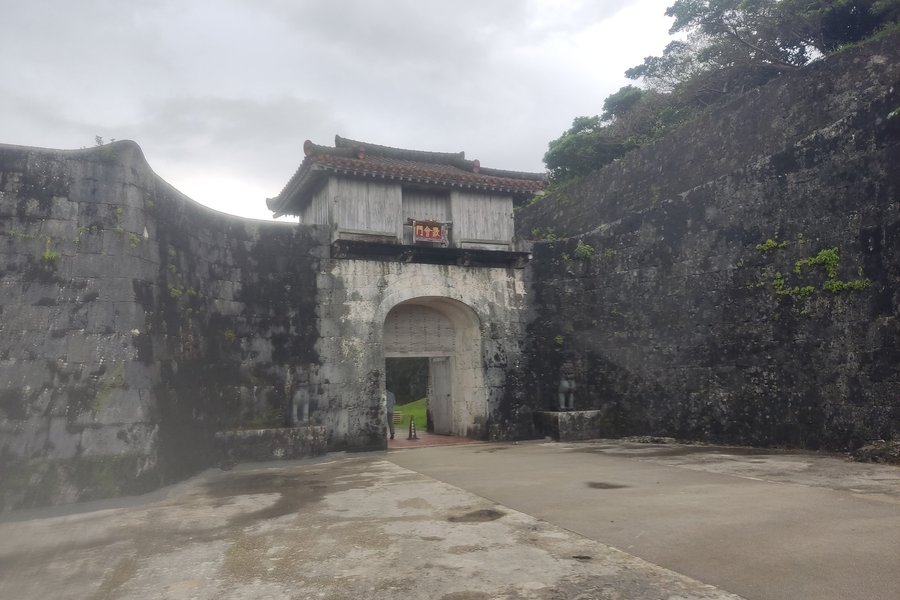
Time of the visit: 24+25+27th of june,2025
Naha is a somewhat over-the-top city and has American elements to it ... something untypical of Japan..it feels more like Hawai.
I first visited the Shuri Castle.I took one of the monorail trains and got off at the stop "Shuri station"
From there I walked to the castle,but had to flee into a small Japanese restaurant when the sky opened its gates flooding the streets with heavy rain.I was trapped in the restaurant for 45 minutes before the rain turned into a light drizzle.
Shuri Castle is a historic Ryukyuan gusuku (castle) located in Naha, Okinawa's capital. Once the royal palace of the Ryukyu Kingdom (1429–1879), it served as the political, cultural, and diplomatic heart of the islands.Perched on a hill overlooking Naha, Shuri Castle combines traditional Ryukyuan architectural style with influences from Chinese and Japanese design, reflecting the kingdom’s position as a hub of maritime trade and diplomacy in East Asia. At the center of the complex stood the Seiden (Main Hall) — an elegant wooden structure where royal ceremonies, audiences, and important state rituals took place. Shuri Castle was destroyed during the Battle of Okinawa in 1945, later reconstructed in 1992, and became a UNESCO World Heritage Site as part of the “Gusuku Sites and Related Properties of the Kingdom of Ryukyu.” Tragically, a major fire in 2019 destroyed much of the reconstructed main hall, but restoration work is actively ongoing, with efforts to faithfully rebuild it using traditional methods and …
Keep reading 0 comments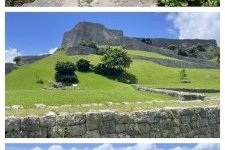
Visit June2023. It seems that most visitors of this site only visit the elements around Naha, the southern part of the Okinawa Island. Our Okinawa stay was three nights, and we visited all nine elements of this site. We picked up our rental car at the airport and drove immediately up to the northern part of the island. As we first visited the subtropical rainforests in the northern part of Okinawa (WHS), we approached these Gusukus of Ryukyu from north (or northeast).
The northernmost Gusuku is Nakijin-jô naturally became our first visit. Nakijin Castle Ruins are huge, probably the biggest site in this “collection”. It’s a ruin of a castle residing nicely on a hilltop and down the slopes in every direction. The walls are high and even though they probably are restored it gives a good impression of how it once was. In addition to the walls as part of the “main castle” there are living quarters and holy places around inside the outer walls. The surrounding area is lush green and on the hilltop it’s a nice rest for your eyes – looking all the way to the sea.
Next in line (although it’s far from a straight line) was Zakimi-jô which is a ruin of a castle as well. It is a little more than an hour drive from Nakijin. This site is probably the smallest site and the least interesting. It’s the only site without an admission fee, maybe because there is very little …
Keep reading 0 comments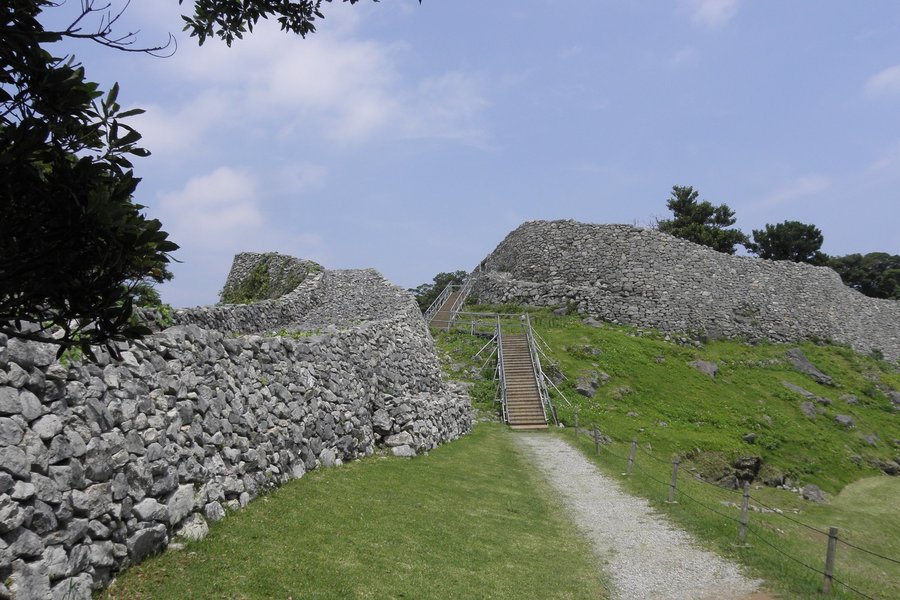
During our honeymoon in Okinawa, I insisted that we stop at at least a few of the Ryuku sites. The first place we went to was Nakijin-Jo, in the north of the island. Out of the castle ruins, these were the most expansive and still offer both great views and a sense of the scale, size, and layout of the place when it was in use. There is an excellent visitor center and parking.
While driving south, we stopped at Zakimi-Jo, which was much smaller and more contained, but still nice to see, and a local couple was taking their wedding photos there.
Later, we visited the main complex at Shuri Castle, which sadly burned down just months after we were there. I certainly am glad they are committed to rebuilding it, because the rebuilt palace complex was stunning.
However, easily the best of out all the sites (at least the ones we visited) was Sefa-utaki. A little out of the way but very reachable by bus from Naha. This is more of a natural site, a spot of unspoiled tropical forest with massive, limestone formations rising out of the ground. Before it was conquered by Japan and an independent kingdom, this was a place reserved solely for royalty and the priests of the local religion, and that sense of spirituality still pervades the grounds today. Though the ancient religion itself is no longer practice, the locals who tend to the site are still extremely reverent, and …
Keep reading 0 comments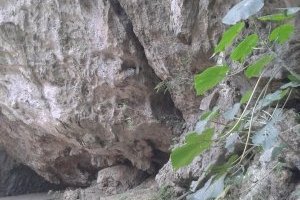
In November 2019, I spent two weeks in Okinawa Main Island. Thus, I had an opportunity to explore most of the interesting sites that Okinawa offers (1 WHS, 1 TWHS and much more…). It was my second visit to the island (first visit in March 2016). By coincidence, I arrive to Okinawa just few days after the disastrous fire of Shuri Castle that I fortunately managed to visit 3 years ago.
WHS consists of 9 components in total: 5 castles, 1 mausoleum, 1 garden villa, and 2 sacred places (Utaki) from which only one remains intact as the cultural landscape while only the stone gate survived from the other. Selected sites, monuments and landscapes complement each other and express the unique Ryukyuan heritage that is still living in part: Utaki places are still used by locals and I could see a shock of Okinawa people after the fire of Shuri castle, which is a true symbol of Okinawa culture.
This year I visited 6 components (Shuri and Nakijin castles, Tamaudun royal mausoleum, Shikinaen garden villa, Sefa-Utaki cultural landscape and Sonohyan-Utaki gate) thus I now fully understand OUV of this WHS. I have not visited 3 more castles (better said what remained from them) but I think it would not bring anything new to me as Nakijin and Shuri are considered as the best examples. Though it is probably not a world-class, it is certainly unique and I really enjoyed my visit.
I used only public transport or …
Keep reading 0 comments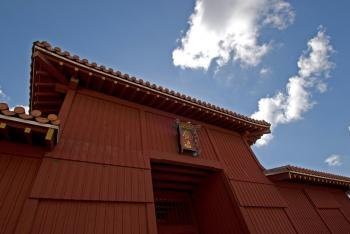
I visited in 2007.
Okinawa has traditionally been culturally and linguistically separate from Japan. It wasn't until the late 19th-century that Okinawa became part of the Japanese Empire.
That history is reflected in the structures of this world heritage site. The nine sites which are included in this property all harken back to before it was absorbed into Japan.
I've often said that the Ryukyu Islands are Japan's Hawaii. A chain of islands annexed in the 19th-century with their own culture, and now people go there for warm weather vacations.
Read more about the Gusuku Sites and Related Properties of the Kingdom of Ryukyu on my website.
Keep reading 0 comments
I went to Okinawa in February 2016 on a whim after seeing ads for a flat £60 tourist fare for any domestic Japan flight. We were on a weeklong trip seeing the WHSs of mainland Japan, but I thought it'd make a nice break to fly to Naha for the day and see the 4 subcomponents situated in the city.
Naha is served by a single monorail line that connects its airport, at one end of the line, to Shuri Castle, at the other. It is 820 yen at time of writing, and the largest of the Naha Ryukyu sites. It was completely destroyed in the fierce WWII Battle of Okinawa when the Japanese used it as a defensive position. The castle was rebuilt in the 1990s from historical records, as faithfully as possible.
Next to the castle is another WHS subcomponent, in the form of a gate protecting a sacred grove of trees (free to see). The gate, known as Sonohyan-utaki Ishimon, used to be opened only for the king. There being no Ryukyuan king these days, it is never opened any more.
Just a few metres down the road is the third subcomponent – a mausoleum called Tamaudan. It consists of two stone-walled enclosures, and was the burial site of Ryukyu kings and queens. It costs a nominal 300 yen to get into, and although there is not much to see the guest centre does have a small information room.
The final Ryukyuan site for us was to …
Keep reading 0 comments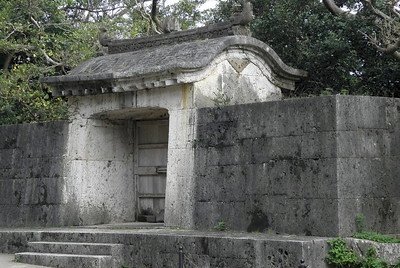
Okinawa sees 3.8 million visitors yearly, but not many of them are foreign tourists. In our ranking of visited WHS this one is at the lower end, sharing its 8 visits with rather remote locations such as Manu National Park in Peru and Konya-Urgench in Turkmenistan.
If you've made it all the way to Okinawa, the inscribed sites are quite easy to visit. Four of them are located in the capital Naha. That's where I started too. The main location is Shuri, the former inland capital which has now been merged with the port city of Naha. Shuri holds 3 out of the 9 WHS locations. Shuri Castle is the main attraction of whole Okinawa, and I encountered lots of school groups there. Here a Gusuku has been fully restored / rebuilt, which gives you an idea of how it functioned.
The Sonohyan-utaki stone gate is located in the same complex and is a strangely mysterious religious site. I was quite captivated by the thought of praying to a stone gate instead of the sacred grove that formerly lay behind it.
Finally, the royal mausoleum Tama-u-dun is a 5-minute walk away. The doors to the burial chambers are forever closed too. What remains is an austere monument, with three sculptured lions located on pedestals guarding it.
In a different part of Naha lies Shikinaen, a garden villa, and a Chinese landscape garden. It's a very serene place (the crowds will not get here), and worth a …
Keep reading 0 comments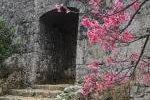
Okinawa is one of the most interesting places in Japan since once it was the capital of ancient independent kingdom of Ryukyu, the prosperous maritime kingdom where international trade influenced its unique culture making the island became a fascinating melting pot of local, Chinese, Japanese with some Southeast Asian touches. On invitation of my friend to see the Okinawan cherry blossom festival on February, which considered the first place to see the flower blooming in Japan, I stayed on the island for one week and had a chance to see the Gusuku sites, one of Japanese World Heritage.
I have visited 5 out of 9 sites that UNESCO inscribed, the first two places are the ruins of Nakijin Gusuku and Naka Gusuku, both were Gusuku which means castle, the castle ruins were just amazing, I never ever expected to see these kind of ruins in the country liked Japan, the ruins made me think that I was looking the Inca or Maya civilization or even the great Zimbabwe ruin in Africa, they were so unique in my opinion, not only the ruins surprised me, the surroundings were just breathtaking, from the castles I could see the beautiful turquoise coral sea of Pacific, the lush tropical forest and many of blooming cherry trees, truly a postcard perfect.
As I mentioned the Gusuku I visited were ruins, both from antiquity and war especially the battle of Okinawa during WWII which destroyed almost every historical site on the island, the …
Keep reading 0 comments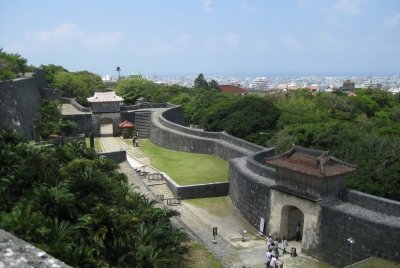
I visited the WHS in Naha in September 2009.
Sonohyan-utaki Ishimon is a stone gate opposite the stairs that lead up to the Shuri Castle entrance. It is easily overlooked as Shureimon, the main gate to the castle, right next to Sonohyan-utaki Ishimon is more of an eye-catcher. Admission to the gates is free.
The main hall of Shuri Castle was undergoing some renovation i.e. half of the main hall was hidden behind a scaffold. The entrance fee was 800 yen. The fee also gives you access to the excellent museum (English text available). One should know that Shuri Castle is a reconstruction of the original castle which was destroyed in WWII.
Tamaudun: This mausoleum is a short walk west of the Shuri Castle site. For a small entrance fee one gets access to the venue and to a small museum. Note that there are no English descriptions in the museum.
Shikina-en, the royal gardens about 2 km south of the Shuri Castle site, offer an interesting mixture of Japanese layout, Ryûkyûan architecture, and Chinese elements. Don’t expect a fancy Japanese garden. Simplicity prevails.
Keep reading 0 comments
I visited the Gusuku Castle Ruin in Kitanakagusuku, Okinawa on 29 Oct 05. The fee for adults was 300 yen. The castle ruins itself is impressive. There is some restoration still taking place, but the fee is well worth it.
On the same day of my visit, a friend accompanied me. He and I also planned on checking out the "haunted" hotel. We had brought flashlights and were prepared to thoroughly investigate the nooks and crannys of the hotel. We visited on a sunny day, so we didn't need to use the flashlights that much. Before visiting we made sure that we had new batteries, just to make sure. We were standing inside a hallway, which seemed to be an entry way from the hotel's access road to the upper tier and lookout. Across the street from where we were standing there is one tomb that had the cement block removed and a cave that was cemented and had a small shrine in front. As my friend and I were talking, his flashlight quickly went from shining brightly to nothing. It was as if the power had been drained from it. He had a small pocket flashlight as a backup, which he pulled out and it too began to have a power drain. Seeing this I turned on my flashlight and it was fine. He swore to me, with a look of astonishment, that the batteries in both were new. It was at that point that he took out his …
Keep reading 0 comments
The gusuku castle sites are certainly a must for anybody interested in visiting castles, castle ruins - in particular, Japanese castles. Shuri Castle is quite impressive, although it's just a copy of the original that was lost to WWII, it's one of the most beautifullest places on the island of Okinawa and certainly is a gem. The other castles such as Nakagusuku and Nakajin and Zakimi are ruins and are worth also the visit. Nakagusuku castle ruins are also known as the "haunted castle" and the ruins are beautiful. You can walk around the castle grounds and view the surroundings and scenery. Next to the castle ruins are the modern ruins of the haunted hotel that was burnt over 20 years ago which remains intact. A walk up to the viewing tower of the hotel will give you a spectacular view of the island's western side and castle grounds. To better experience the haunted feeling of the Nakagusuku and the haunted hotel is at night (bring a flashlight). Nakajin Castle and Zakimi Castle have beautiful views as well when you stand on their walls.
Keep reading 0 comments
